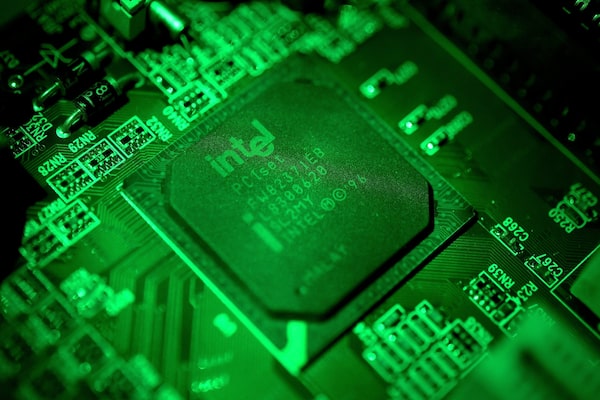As Intel Corp. prepares to battle against Nvidia Corp. and Advanced Micro Devices Inc. in the market for standalone graphics chips, it is setting up shop in a familiar setting for the sector: the Toronto region.
The multinational computing giant plans to set up a new engineering lab for graphics processing units, or GPUs, in North York, just south of Markham, where ATI Technologies Inc. became a global GPU-making powerhouse before being acquired by Advanced Micro Devices, or AMD, for US$5.4-billion in 2006.
While Intel has dominated the market for integrated GPUs that are bundled with central processing units, or CPUs, standalone graphics chips have become a fast-growing market. GPUs are able to handle computing processes in parallel, as opposed to traditional CPU chips, which tend to handle tasks sequentially. These graphics chips have come to the forefront of computing innovation this past decade, as their design allows them to efficiently handle the hefty, distributed algorithms that underlie artificial-intelligence techniques such as machine learning. Ninety-three million units shipped worldwide last year, of which AMD and Nvidia had a strong duopoly.

An Intel circuit board displayed in Duesseldorf, Germany, on January 4, 2018.SASCHA STEINBACH
As Intel prepares to release its own discrete GPUs by 2020, the lab is scheduled to open Wednesday. It will eventually be home to dozens, if not hundreds, of engineers working on the chips, said Ari Rauch, the company’s vice-president of visual technologies, who previously spent time in the Toronto area as a vice-president with AMD.
“Since I joined Intel three years ago, [Toronto] was always on our radar. So when we were going to expand our dreams, we really wanted to tap into this great talent that exists there,” Mr. Rauch said in an interview.
While Toronto has increasingly become a hub for AI research and innovation, with global powerhouses such as Uber Technologies Inc. and LG Electronics Inc. setting up AI shops in the city, Mr. Rauch said Intel’s interest comes in part because of its deep history with graphics chips themselves, thanks to ATI and AMD.
As such, Mr. Rauch said, Intel’s chips will be focused on serving a number of markets, including gaming and professional video editing on top of AI.
Jon Peddie, a graphics-technology analyst based in California, said in an interview that he forecasts 91 million GPUs to ship worldwide in 2018. That figure is smaller than what shipped in 2017, in part because demand in recent years has been tied to cryptocurrency developers, including for Ethereum, which fell in value and changed its algorithm this year, Mr. Peddie said.
Intel, he said, suffered from poor sales when it tried to bring a discrete graphics chip to market earlier this century, as its technology wasn’t competitive against AMD and Nvidia products. But he added the company would still benefit immensely from brand recognition when it finally brings its new discrete GPUs to market. “So their ability to gain market share on the basis of that incredibly powerful brand gives them a distinct advantage entering such a tightly controlled market so late,” Mr. Peddie said.
Tim Brunt, who runs the Canadian personal-computing group at market-intelligence firm IDC, said demand for GPUs has been growing, even from more casual users, as consumers seek out more high-end computers. “People are demanding a lot more from these types of devices,” he said. But it won’t be easy for Intel to take advantage of this plan by its 2020 goal: “Just on the engineering side of things, you’re looking at a three-plus-year process."
Intel already has about 400 employees in the Greater Toronto Area working on microprocessors and CPU-based intellectual property. The new GPU lab will be led by Joseph Facca, a former senior director at AMD.